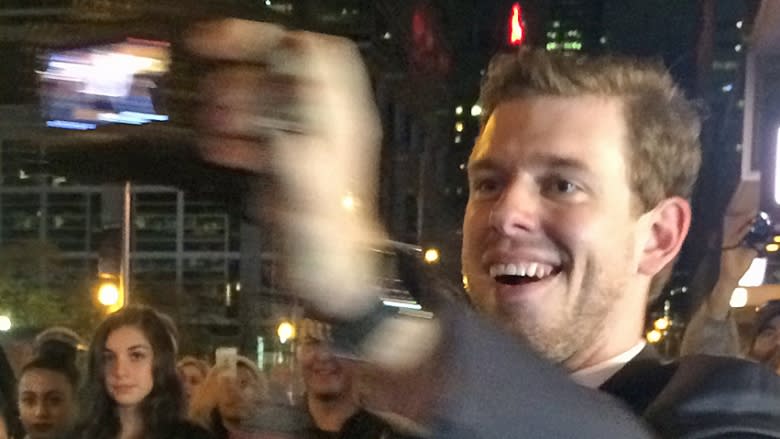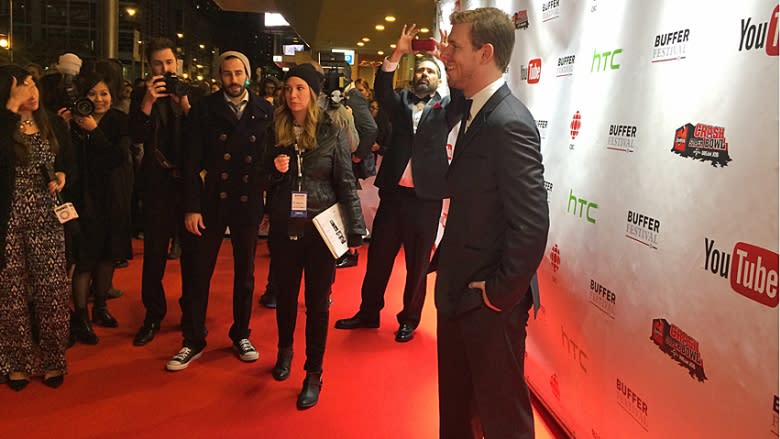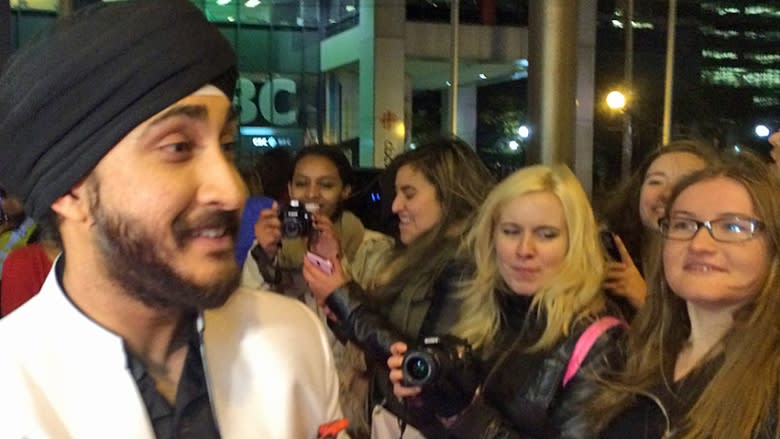YouTube sensations: How online celebrities get rich in an often-wacky world
A manic man with an oversized beard leaps out of a limo onto the red carpet, setting off hundreds of screaming fans. It’s Shay Carl of the Shaytards, patriarch of the royal family of YouTube.
Right behind him, the caustic comic Wheezy Waiter pirouettes his golden-gowned main squeeze. The crowd roars again.
Not one to be beat, the British boy wonder and video-making voyager Jack Harries of JacksGap whizzes by on a neon-coloured skateboard. The girls swoon.
Welcome to a red carpet event like no other, where the wild, wacky and often wealthy world of YouTube comes together.
These are the celebrities of the online universe, people who are famous for creating content so popular some of them are multimillionaires, drawing the kind of audiences advertisers dream of and are willing to pay big bucks for. (Watch "Digital Dreams" on The National on CBC television Wed. Oct. 22 at 9 p.m.)
Dozens of them descended on Toronto this past weekend for the Buffer Festival, the world’s only YouTube showcase.
‘Pinch-me moments’
Stretched out in his own stretch limo, Corey Vidal is the virtual visionary behind Buffer. The 28-year-old Canadian YouTube hotshot has a rags-to-riches story and is now living the digital dream.
"When I was putting my tux on I was like 'I can’t believe I’m doing this,' " he says.
There have been a lot of "pinch-me" moments.
After all, this is a guy who was raised in Ontario's Niagara region and barely made it out of high school. At one point he was homeless, but now he runs a successful YouTube business.
“I don’t think I’m at the top of my game. I think I’m just unbelievably lucky to be doing what I’m doing."
It has been a meteoric rise. Eight years ago, Vidal was just another wanna-be YouTuber in his parents’ basement with a camera, recording one dance video after another and posting them on YouTube.
The online obsession caused tension at home. Vidal moved out, couch-surfed and even ended up in a homeless shelter.
Zany idea
But he still had his computer and a zany idea: to lip synch to an a capella song with a Star Wars theme.
“In the first day, it got 30,000 views, which was a record for me, and the next day it got 100,000 views and then YouTube ended up featuring it on their Canadian homepage. And the video got a million views — just like that.”
And just like that, a YouTube star was born.
Vidal’s video went viral, getting millions more views. Every click got him a cut of cash.
“I ended up making [$50,000] just that month, which is more than I had made my entire life combined up until that point.”
Vidal was an internet sensation. More importantly, he was also a marketing magnet.
YouTube is the second-largest search engine in the world, filled with content that draws millions to videos showing everything from how to apply makeup when you’re drunk to how to scientifically cure a hangover.
Funny, relatable or just plain silly, people are watching those videos. And advertisers and sponsors are all clamouring for those viewers' eyeballs.
Star ladder
No one knows that more than Google.
The internet giant bought YouTube in 2006 and turned it into a social media-based star ladder and lucrative career path.
Google holds regular workshops with free coffee and free tips for promising YouTubers to help them grow their brands and their bank accounts.
The deal is they generate original content and get half of the ad revenues they attract. The bigger the audience they can build, the bigger the advertising dollars, and the more money they and YouTube stand to make.
Wendy Bairos calls it a win-win. Bairos, who is with Google Canada in Toronto, oversees the mentoring program and says there is a booming business in raw content.
“I know authenticity is a word people throw out every time. I think there needs to be an authentic voice because when a global audience is telling you what’s good or not, they’re not shy. They’re going to tell you and they’re going to know if you’re not being authentic in how you present yourself.”
Vidal says the ad partnership with Google put him on top of the online heap.
He now has a dozen full-time staff. They live and work together in what looks like a frat house west of Toronto, glued to their screens as they create content for his YouTube channels.
Hard work
Vidal’s videos now range from big-budget music video productions to raw daily “vlogs” — virtual blogs or diaries of day-to-day activities, like Vidal and his crew taking trips to the dollar store.
Vidal says going viral once was a dream. The rest is hard work.
“I had a viral video in 2008 and I’ve been living off of YouTube ever since by taking the success of that video and turning it into a full-time career. It’s all about loyalty. That loyalty is really important. We’re building a relationship with an audience that keeps coming back.”
With 200,000 subscribers on his two YouTube channels, Vidal has a steady audience and a steady income stream.
But he’s coy about how much he actually makes.
“God, I knew you were going to ask me that.” After a pause, he adds: “We've made millions off of YouTube, we really have.”
However much he has earned, it’s enough to give Vidal the luxury of shifting into a mentoring role.
Giving back
And it’s why at the end of the Buffer Festival gala, he was almost giddy with big news.
Google has created a Buffer Grant worth more than $200,000 to support Canadian YouTube talent.
Vidal will be in charge of it. He says it’s all about giving back.
"YouTube has done everything for me, I am everything because of YouTube. All of my friends, everyone here, everything I own, everything in my house, it is all because of YouTube."
Vidal now plans to direct more and star less in YouTube videos and let someone else have a spot in the virtual sun.
"I’ve had my dream come true. I’ve had my YouTube dream and I want to help that happen for a lot of Canadians."





